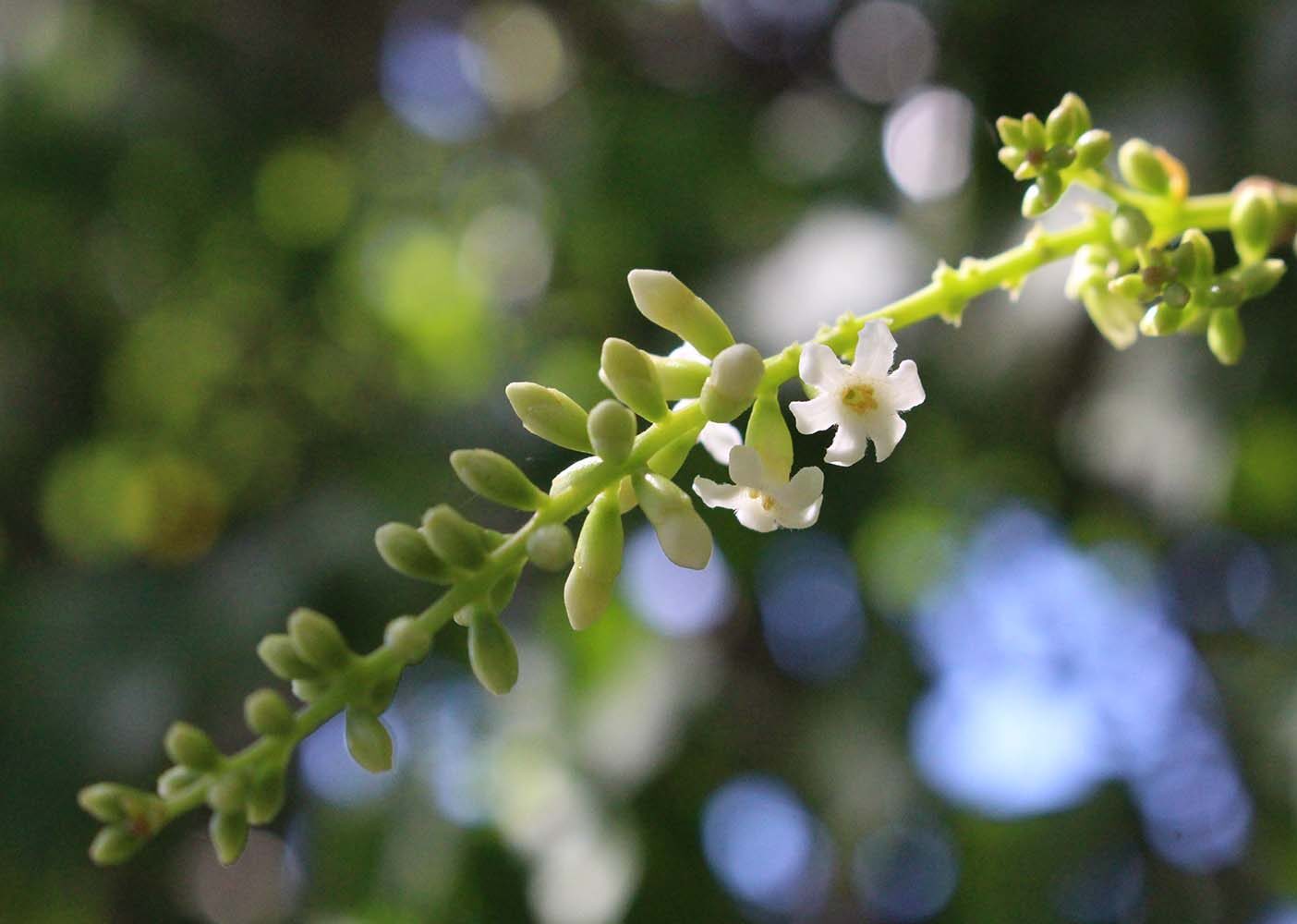
Do you remember the perfume your mother wore when she kissed you on her way out to a formal occasion? Smell is said to be the sense most linked to memory, because the organs you use to detect scents are closely linked to the brain’s limbic system, which is extremely important to memory and emotion. A person encounters most new scents during childhood, so those may be the ones that evoke the strongest emotions, but even today a trip to the Garden, especially at night, will delight and create new memories.
Why is night so important as a different way to experience plants? Part of the reason is that we are less bombarded with colors and shapes. In our subtropical climate we can relax and take in the subtler aspects of the Garden around us. But the plants themselves have a different agenda. Some flowers, particularly white ones, have taken a different evolutionary pathway. They don’t try to compete with the red and yellow flowers that flaunt themselves to daytime pollinators, such as bees and hummingbirds. Instead, they are after the night pollinators – moths, including the giant sphinx moth, some as big as hummingbirds, and even bats.
Many of these white flowers don’t even bother to send out a fragrance during the day. But at night it’s a different story. Some plants to look forward to during night-time events in the Garden include Brunfelsia pilosa in the Kapnick Brazilian Garden and Brunfelsia americana in the Kapnick Caribbean Garden. All these plants are coyly referred to by the common name lady of the night. As you stroll through the South Grove on your way between the Scott Florida Garden and the Lea Asian Garden, you will almost certainly be oeverwhelmed by the huge white pendant flowers and perfume of angel’s trumpet, Brugmansia X candida.
Fortunately, some of these beautiful white (or yellow) flowers do allow us to enjoy their fragrance during the day. Many gardenias as in bloom for long periods of time in the Lea Asian Garden, as is the Chinese perfume plant, Aglaia odorata, planted on the west side of the Candi Sukuh ruin. Another plant in this garden, on the banks of the Barron Pond surrounding the Dewi Sri shrine, is known as perfume flower trees, Fagraea berteroana, and is traditionally used for making leis.
Many Florida native plants have wonderful fragrances. Fiddlewood, Citharexylon fruticosum, is an all-around fantastic plant, with shiny green leaves, sweetly fragrant white flowers and beautiful green, red and black berries. Another great choice, marlberry, Ardisia escallonioides is smaller and less aromatic, but still beguiling.
Some orchids can be placed right by your front door where you can enjoy them after dinner. Brassavola nodosa is an orchid with a delightful citrus fragrance, and its even better hybrid, Brassavola ‘Little Stars’ will draw you out at night.
And to go back to those memories… your mother may have been wearing Joy by Jean Patou, once touted as the most expensive perfume in the world. An essential ingredient is Magnolia (once known as Michelia) champaca. A hybrid is located just before you exit the Garden and is fragrant most of the day. Or she may have favored Chanel No. 5. Visit the Smith Labyrinth in the Scott Florida Garden to enjoy the spider-like yellow flowers of Cananga odorata that are said to be the top note in that famous perfume.
You may be transported back in time.
— Article* by Liz Chehayl, Curator of Collections at Naples Botanical Garden.
*Originally appeared in the Garden’s Fall 2015 Magazine.

